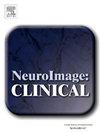告诉我为什么:对基于fmri的网络分析的基本构建模块的范围审查
IF 3.6
2区 医学
Q2 NEUROIMAGING
引用次数: 0
摘要
了解精神病学和神经学疾病中复杂的脑-行为关系对于提高临床洞察力至关重要。本文综述了基于功能磁共振成像(fMRI)的网络神经科学背景下网络估计方法的现状,重点是静态无向网络分析。我们专注于在一年内(2022年)发表的论文,并描述了我们认为网络分析的基本构建模块:样本量、网络大小、关联类型、边缘包含策略、边缘权重、建模水平和混杂因素。我们发现,在所有纳入的研究(n = 191)中,最常见的方法是使用两两相关来估计大脑区域之间的关联(79.6%),估计加权网络(95.3%)和估计个人水平的网络(86.9%)。重要的是,大量研究缺乏对其方法选择的全面报告,阻碍了该领域内研究结果的综合。这篇综述强调了对fMRI网络估计方法的仔细考虑和透明报告的迫切需要,以促进我们对复杂大脑行为关系的理解。通过促进网络神经科学和网络心理测量学之间的整合,我们的目标是显著提高我们对这些复杂联系的临床理解。本文章由计算机程序翻译,如有差异,请以英文原文为准。
Tell me why: A scoping review on the fundamental building blocks of fMRI-based network analysis
Understanding complex brain-behaviour relationships in psychiatric and neurological conditions is crucial for advancing clinical insights. This review explores the current landscape of network estimation methods in the context of functional MRI (fMRI) based network neuroscience, focusing on static undirected network analysis. We focused on papers published in a single year (2022) and characterised what we consider the fundamental building blocks of network analysis: sample size, network size, association type, edge inclusion strategy, edge weights, modelling level, and confounding factors. We found that the most common methods across all included studies (n = 191) were the use of pairwise correlations to estimate the associations between brain regions (79.6 %), estimation of weighted networks (95.3 %), and estimation of the network at the individual level (86.9 %). Importantly, a substantial number of studies lacked comprehensive reporting on their methodological choices, hindering the synthesis of research findings within the field. This review underscores the critical need for careful consideration and transparent reporting of fMRI network estimation methodologies to advance our understanding of complex brain-behaviour relationships. By facilitating the integration between network neuroscience and network psychometrics, we aim to significantly enhance our clinical understanding of these intricate connections.
求助全文
通过发布文献求助,成功后即可免费获取论文全文。
去求助
来源期刊

Neuroimage-Clinical
NEUROIMAGING-
CiteScore
7.50
自引率
4.80%
发文量
368
审稿时长
52 days
期刊介绍:
NeuroImage: Clinical, a journal of diseases, disorders and syndromes involving the Nervous System, provides a vehicle for communicating important advances in the study of abnormal structure-function relationships of the human nervous system based on imaging.
The focus of NeuroImage: Clinical is on defining changes to the brain associated with primary neurologic and psychiatric diseases and disorders of the nervous system as well as behavioral syndromes and developmental conditions. The main criterion for judging papers is the extent of scientific advancement in the understanding of the pathophysiologic mechanisms of diseases and disorders, in identification of functional models that link clinical signs and symptoms with brain function and in the creation of image based tools applicable to a broad range of clinical needs including diagnosis, monitoring and tracking of illness, predicting therapeutic response and development of new treatments. Papers dealing with structure and function in animal models will also be considered if they reveal mechanisms that can be readily translated to human conditions.
 求助内容:
求助内容: 应助结果提醒方式:
应助结果提醒方式:


